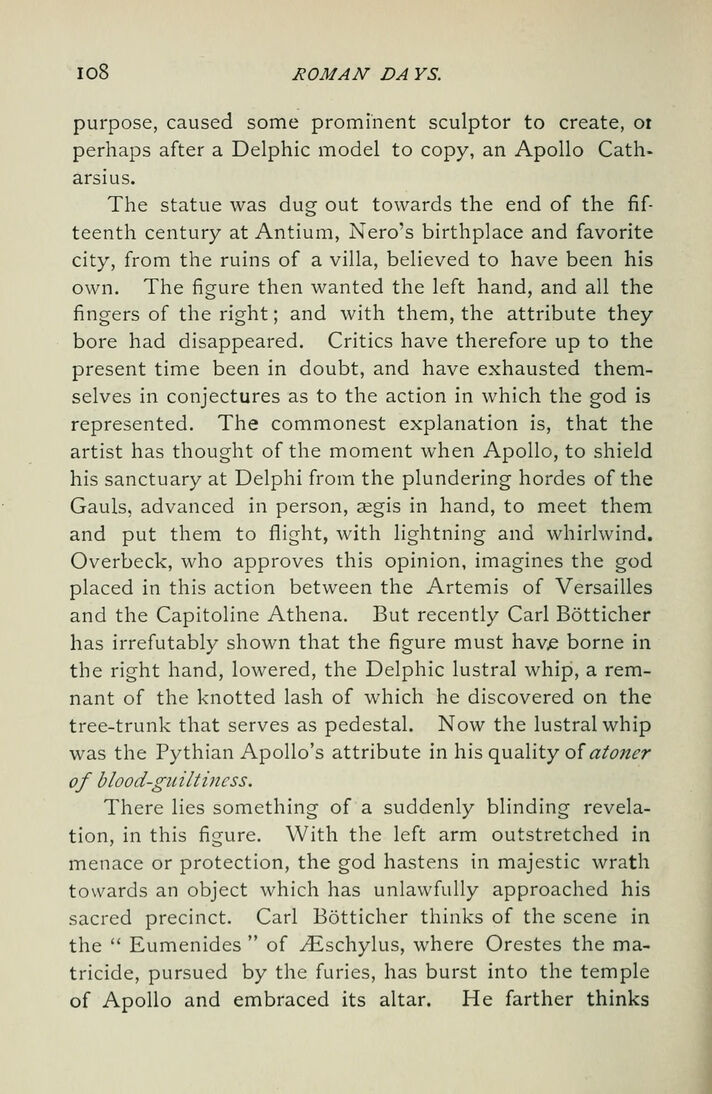
Full resolution (JPEG) - On this page / på denna sida - The Roman Emperors in Marble - 5. Nero

<< prev. page << föreg. sida << >> nästa sida >> next page >>
Below is the raw OCR text
from the above scanned image.
Do you see an error? Proofread the page now!
Här nedan syns maskintolkade texten från faksimilbilden ovan.
Ser du något fel? Korrekturläs sidan nu!
This page has never been proofread. / Denna sida har aldrig korrekturlästs.
I08 ROMAN DA YS.
purpose, caused some prominent sculptor to create, oi
perhaps after a Delphic model to copy, an Apollo Cath-
arsius.
The statue was dug out towards the end of the fif-
teenth century at Antium, Nero’s birthplace and favorite
city, from the ruins of a villa, believed to have been his
own. The figure then wanted the left hand, and all the
fingers of the right ; and with them, the attribute they
bore had disappeared. Critics have therefore up to the
present time been in doubt, and have exhausted them-
selves in conjectures as to the action in which the god is
represented. The commonest explanation is, that the
artist has thought of the moment when Apollo, to shield
his sanctuary at Delphi from the plundering hordes of the
Gauls, advanced in person, a;gis in hand, to meet them
and put them to flight, with lightning and whirlwind.
Overbeck, who approves this opinion, imagines the god
placed in this action between the Artemis of Versailles
and the Capitoline Athena. But recently Carl Botticher
has irrefutably shown that the figure must hav;e borne in
the right hand, lowered, the Delphic lustral whip, a rem-
nant of the knotted lash of which he discovered on the
tree-trunk that serves as pedestal. Now the lustral whip
was the Pythian Apollo’s attribute in his quality of ^^’<??2^r
of blood-guiltiness.
There lies something of a suddenly blinding revela-
tion, in this figure. With the left arm outstretched in
menace or protection, the god hastens in majestic wrath
towards an object which has unlawfully approached his
sacred precinct. Carl Botticher thinks of the scene in
the " Eumenides " of ^Eschylus, where Orestes the ma-
tricide, pursued by the furies, has burst into the temple
of Apollo and embraced its altar. He farther thinks
<< prev. page << föreg. sida << >> nästa sida >> next page >>